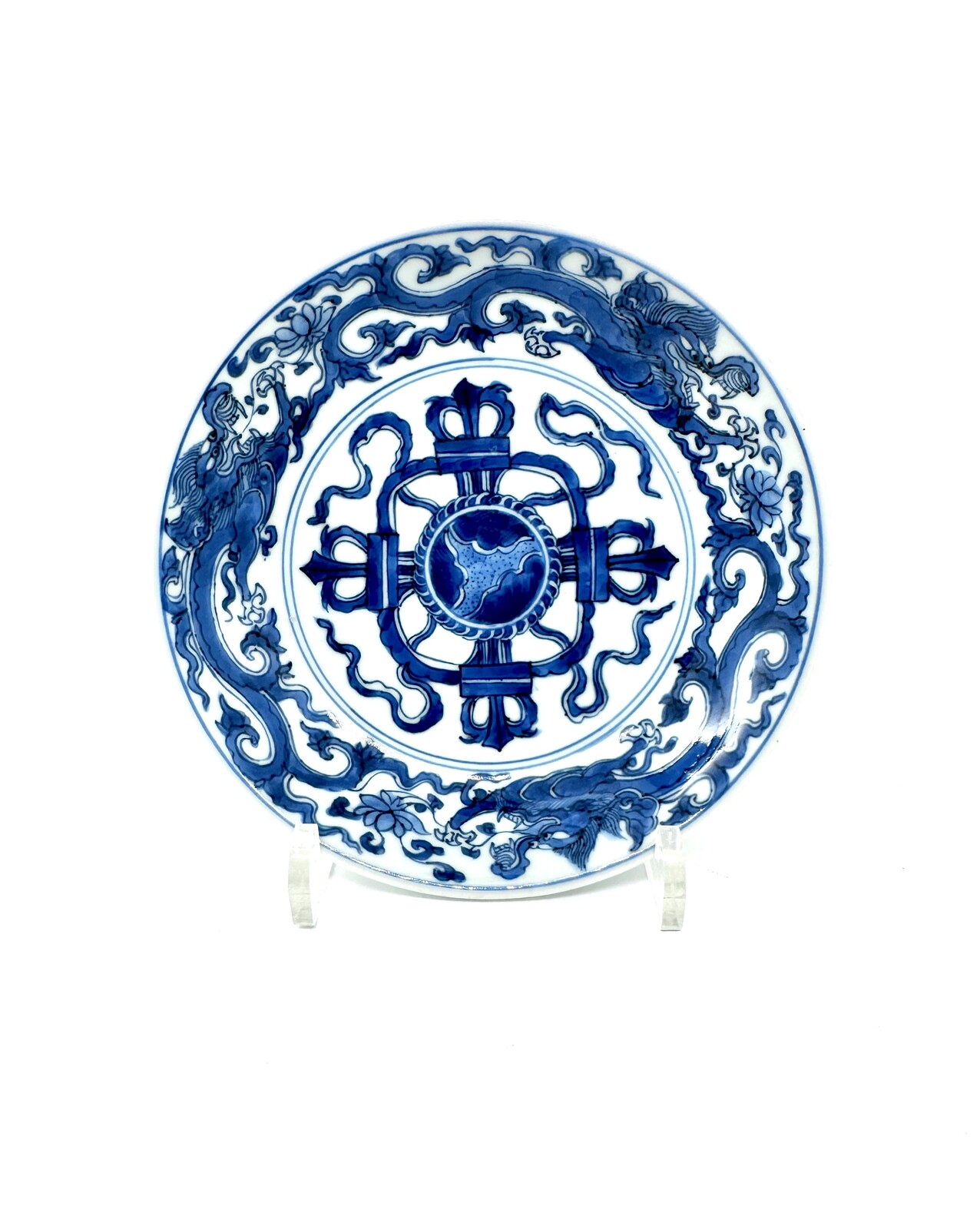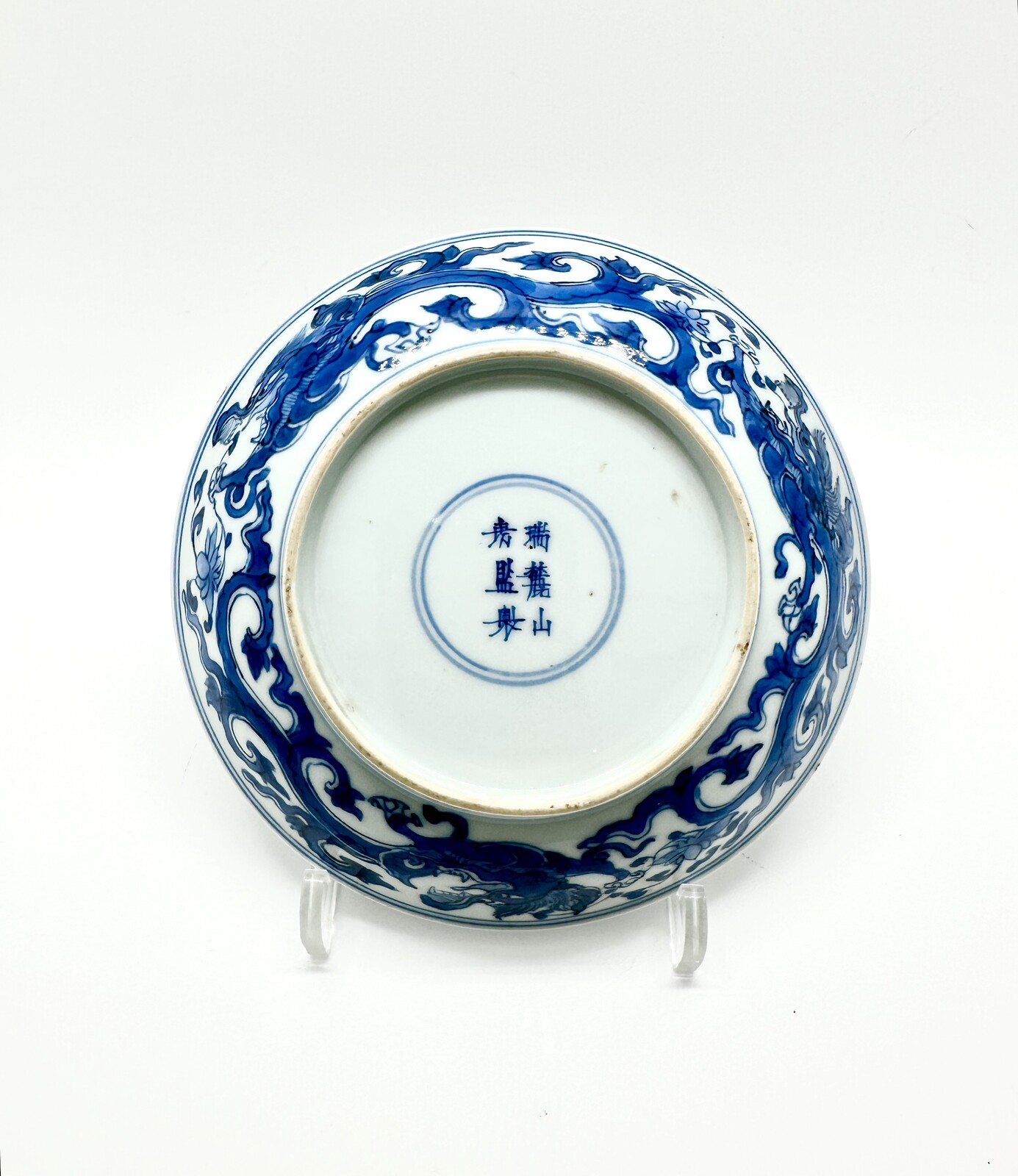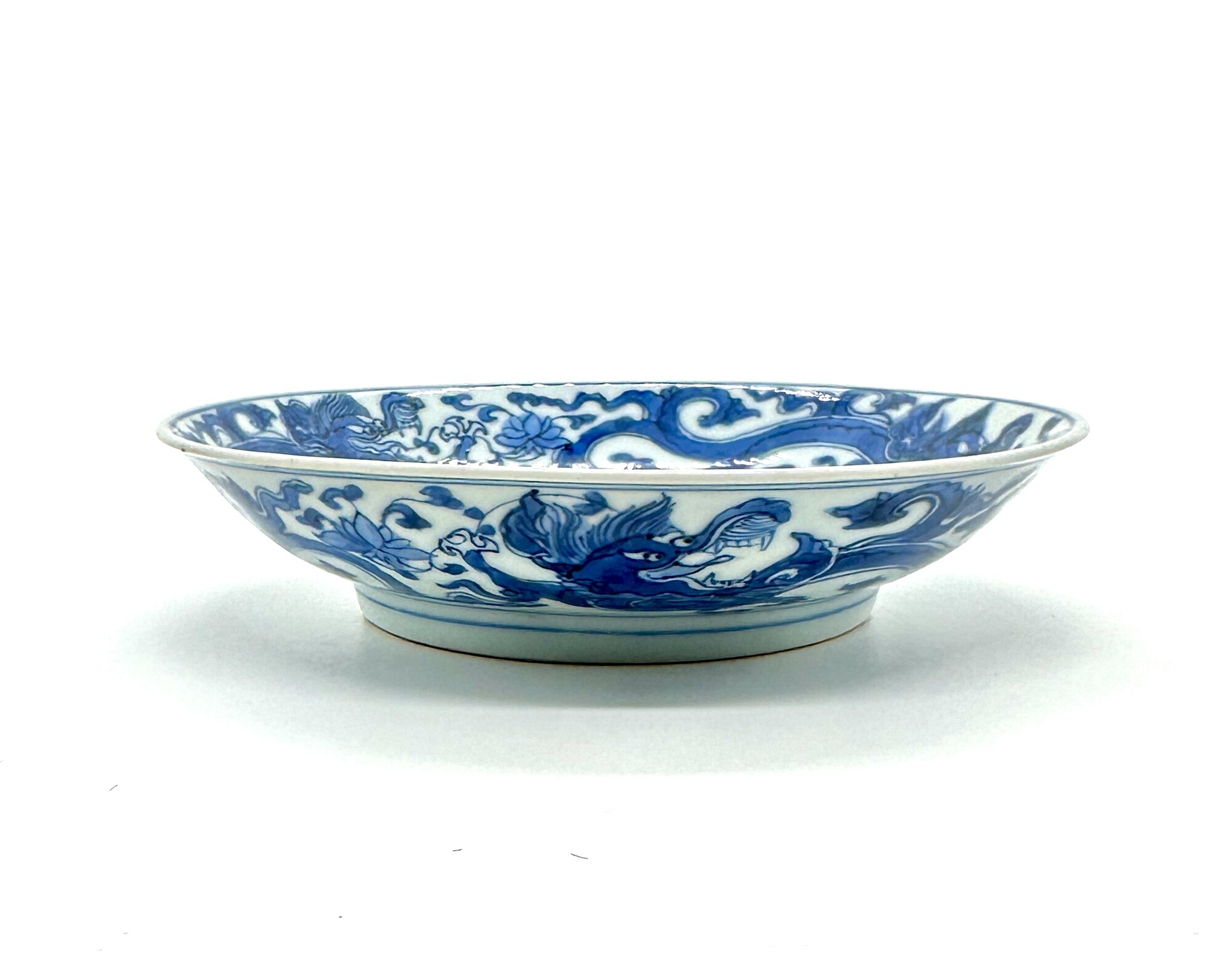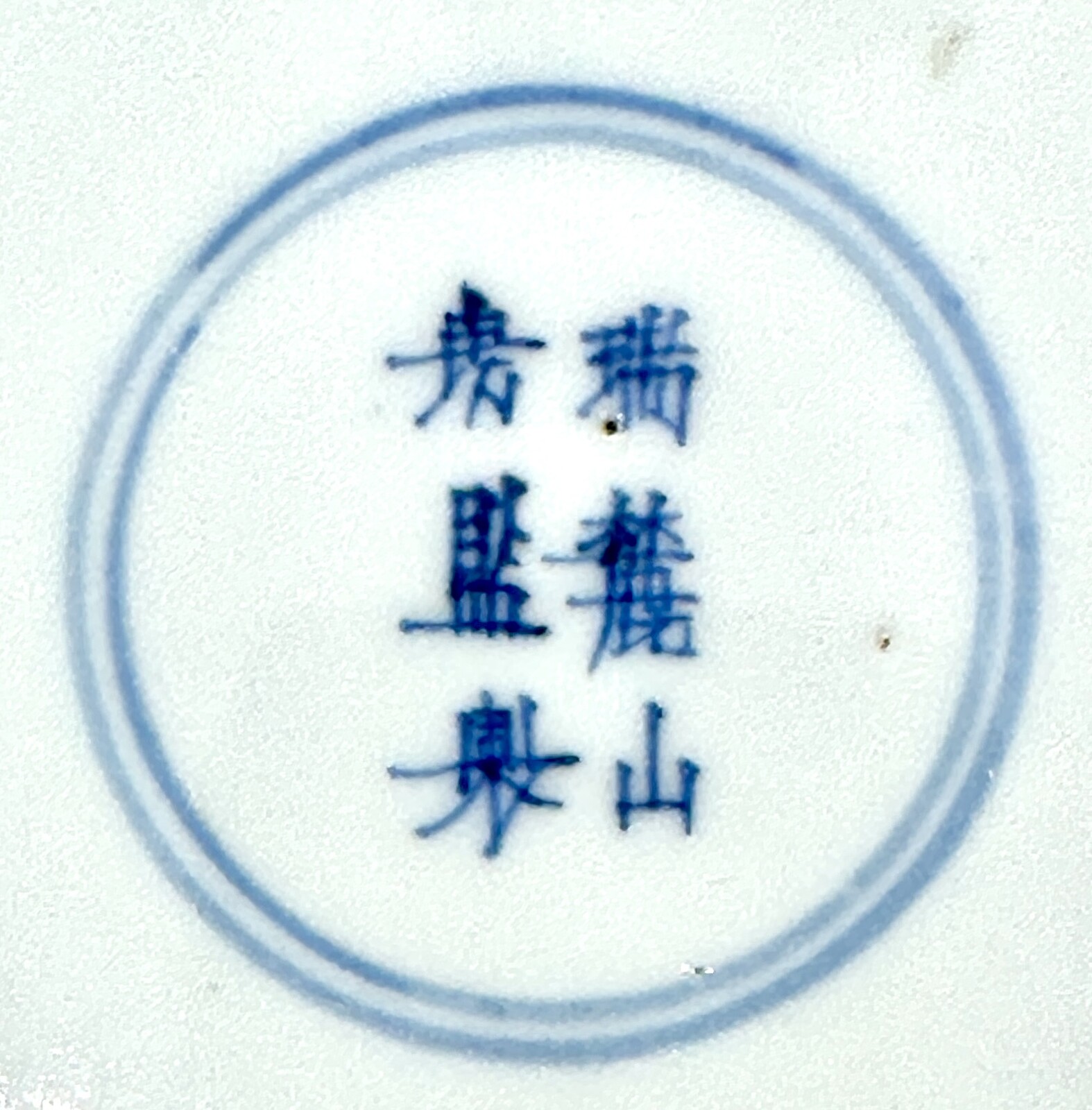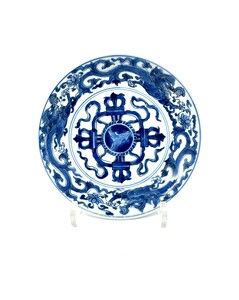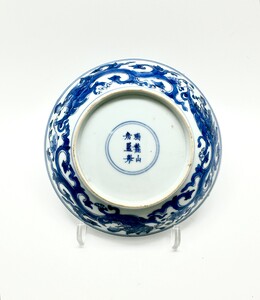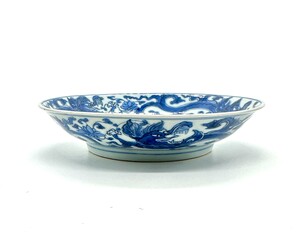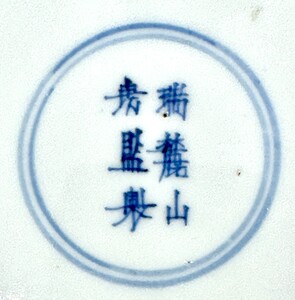Kangxi (1662-1722) Basemark Rui Li Shan fang jian zhi (made under supervision for the Ruili Mountain Lodge), which is situated in Yunnan province along the border with Tibet (see Davison, Marks on Chinese Ceramics, No 2444)
The interior is painted in strong underglaze-blue with two beribboned vajra conjoined with a flower head and encircled by thre kui dragons with foliate tails and open jaws in pursuit of lotus flowers. The reverse is painted with similar dragons facing forwards and backwards.
Diameter 14.3 cm
This dish belongs to a group of fine blue and white wares painted with Tibetan Buddhist motifs produced between the Chenghua (1465-87) and the Yongzheng (1722-35) periods.
Showing Tibetan Buddhist elements such as the 'double vajra' which is often seen in Tibetan metalwork, this dish was probably made for use in Lamaist ceremony or as a gift to a Mongolian ruler or a Tibetan lama who often had a high and powerful position at the Qing court.
It has been suggested that the kui dragon is associated with the double vajra in Tibetan Lamaism (see John Addis, Chinese Porcelain from the Addis Collection: 22 pieces of Chingtechen Porcelain presented to the British Museum, 1979, pp. 50-51, no.21)
The unusual base mark indicates the location where the dish was produced, Ruili Shan in Yunnan province, where Tibetan Buddhism has long been worshipped and which is still famous for its Buddhist temples and monasteries
Provenance: A Dutch private collection acquired in the 1990s
BF 95 清康熙 青花雙金剛紋盤 《瑞麓山房監製》款
時代:清 康熙,1662至1722年。底款「瑞麓山房監製」。
特徵:盤心繪金剛杵,邊緣圍繞蓮花夔龍紋,背面亦繪有類似的龍紋。
尺寸:直徑14.3公分。
來源:荷蘭私人藏家於1990年代獲得之收藏。
